Today we’re discovering the most underappreciated and underrated national monuments in the United States.
The National Park Service (NPS) in the United States maintains over 400 parks, monuments, and other protected areas. The ones officially named “national parks” get all the credit though. Everyone knows the biggies: Great Smoky Mountains, Grand Canyon, Yellowstone, etc.
But popular parks mean big crowds. What if you don’t want to deal with that? Enter the underrated and underappreciated national monuments.
This post may contain affiliate links. As an Amazon Associate I earn from qualifying purchases. This means if you click a link and make a purchase, I may earn a small commission at no extra cost to you.
Why Underrated National Monuments?
Not every state has a national park, but there is a national monument or other NPS-affiliated site in every state. I’m a believer in traveling near as well as far, and exploring your home state’s history or natural landscape is a great place to start.
Also, sometimes you just want to get away from the crowds and enjoy nature by yourself. The most popular national parks can see thousands of visitors per day. Great Smoky Mountains National Park dominates as the most popular national park in the United States and sees 12.5 million annual visitors. That’s just over 34,000 visitors PER DAY.
You don’t have to leave your home state to explore something new. Whether you want to enjoy peaceful nature or learn something new about your state’s history, the NPS has got you covered.
Find your state below and discover a new piece of history or nature, or both!
1. Alabama
Birmingham Civil Rights National Monument: Recently created in 2017 and covering 4.5 city blocks in downtown Birmingham, this monument showcases several key points of interest from the 1960’s Civil Rights Movement. See where Dr. King and others strategized and coordinated for a movement that couldn’t be ignored.
Little River Canyon National Preserve: This park is unusual in that the Little River runs on top of Lookout Mountain near Fort Payne in the northeast corner of the state. Enjoy a cool day on the river, relaxing in the water or hiking nearby trails for beautiful views of the falls.
2. Alaska
Sitka National Historical Park: See native Tlingit totem poles and Russian settlers’ influence and learn about the battles between these two groups. Sitka is on an outer island of Alaska’s Inside Passage, only accessible by air or sea. Ferries, cruises, and flights to the island are more frequent during summer.
Kenai Fjords National Park: Ok, not necessarily an underappreciated national monument, but Alaskan national parks are already the least visited national parks and difficult for visitors to access. A reasonable 2.5hr drive from Anchorage, this park is the easiest to reach of the other 5 national parks in the surrounding area. Experience glaciers, hike the mountains, and maybe spot a whale in the bay!
3. Arizona
Wupatki National Monument: Only an hour north of Flagstaff, walk around ancient pueblos and discover how Native Americans lived 900 years ago. The pueblos are scattered about the park but most are an easy hike from the main road.
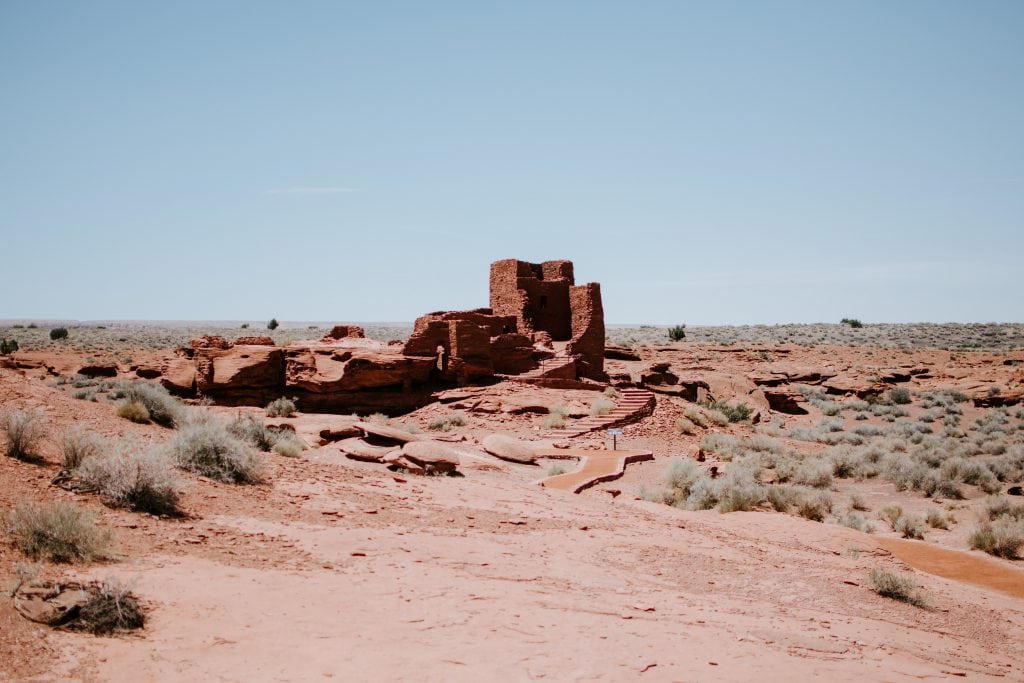
Parashant National Monument: For those that really want to escape civilization for a while and have the experience to handle backcountry, incredibly remote hiking and camping. The NPS site says it best: “Parashant is remote. There are no crowds here. Be equipped to leave pavement, cell service, and the 21st century behind.”
4. Arkansas
Pea Ridge National Military Park: Visit this Civil War battlefield in the northwest corner of Arkansas for a dose of history with a dash of nature. Considered one of the best preserved Civil War battlefields in the country, Pea Ridge was one of the most important battles fought west of the Mississippi River.
Buffalo National River: This gorgeous, undammed river is a 2hr drive north of Little Rock and is lined by bluffs for a unique floating experience. The park is long and skinny, hugging the Buffalo River. Camp, hike, and float your way through a relaxing weekend.
5. California
Manzanar National Historic Site: It’s important to remember everything in history, not just the nice parts. During World War II, the American government forced over 100,000 people of Japanese descent to live in internment camps. And not just citizens of Japan that happened to be here after the attack on Pearl Harbor; this included Japanese American citizens, too.
Devils Postpile National Monument: Check out this crazy geologic formation: basalt columns. It looks like black spaghetti coming out of the ground! While you’re here don’t miss Rainbow Falls on the Middle Fork of the San Joaquin River.
BONUS: John Muir National Historic Site: Visit the home of the Father of the National Park Service, just outside of Oakland.
6. Colorado
Sand Creek Massacre National Historic Site: About 2.5hr east of Colorado Springs is another important moment in history to remember. In 1864, tensions were already high across the country when a detachment of Colorado volunteer soldiers attacked a peaceful encampment of Cheyenne and Arapaho families. Learn their stories at this underappreciated park.
Colorado National Monument: Cruise along Rim Rock Drive and pull over for every. single. overlook view. They are all different and all stunning! Start at the Fruita (west) entrance and drive the entire route through the park to the Grand Junction (east) entrance. With no stops it’s only a 50min drive, but leave some time for pictures and to take a short hike or two. Your Instagram followers will thank you.
7. Connecticut
Weir Farm National Historic Site: Home of American Impressionist artist J. Alden Weir. Explore the artist’s home, studio, and farm as well as the many gardens and ponds that inspired his work. The adjacent Weir Preserve doubles your fun with even more trails and nature to inspire your own art.
The Last Green Valley National Heritage Corridor: The eastern third of Connecticut (and part of Massachusetts) is collectively protected as the last undeveloped area between Boston and DC. Enjoy hiking through forests, paddling down a river, or seeing the stars without urban light distortion to get in your way. Pop in on any one of the dozens of small towns along the corridor.
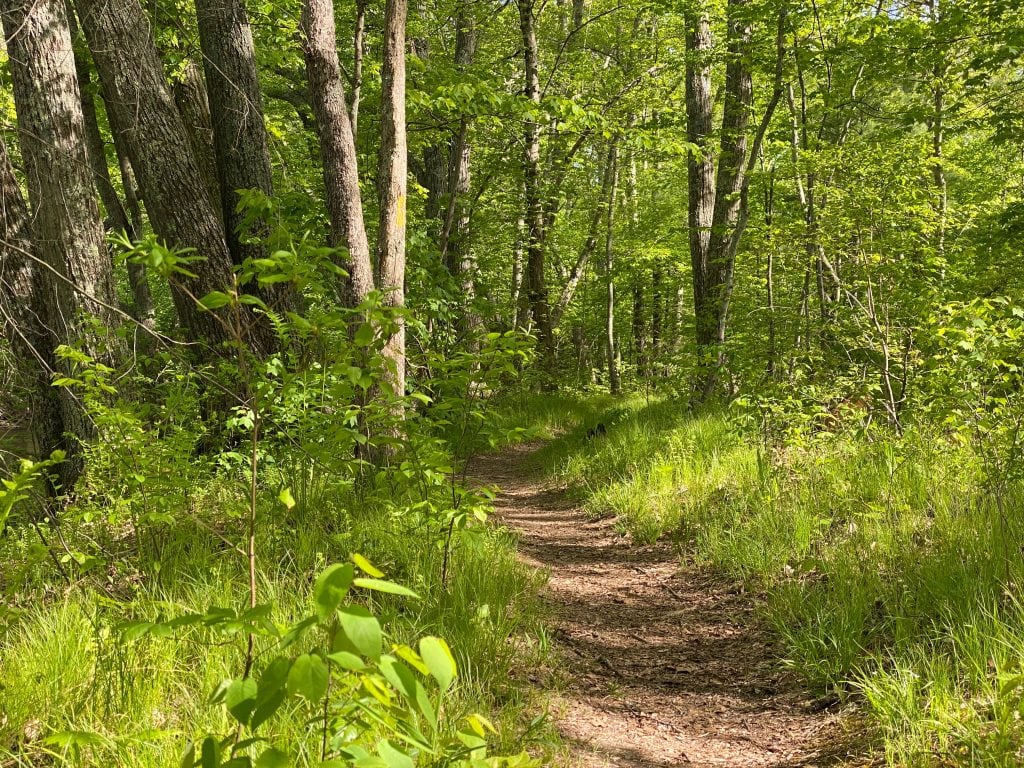
8. Delaware
First State National Historic Park – Brandywine Valley: Delaware is proud to be the first colony to ratify the US Constitution and become the first state. The First State National Historical Park encompasses several different sites across the state, but the Brandywine Valley unit is best for seclusion. Hike through forests or along the river, or enjoy a paddle on the calm Brandywine Creek. Hiking, mountain biking, and horseback riding are all permitted on the trails in the park.
Washington-Rochambeau Revolutionary Route: This route crosses 9 states and the District of Columbia and memorializes the French aid that helped America win its war for independence from Great Britain. The Delaware site is the Hale-Byrnes House where General George Washington held a war council for Philadelphia defenses in 1777.
9. Florida
Big Cypress National Preserve: The northern underrated neighbor abutting the more famous Everglades National Park, Big Cypress has just as much to offer. Canoe or kayak, ranger-led hikes through the swamp, and camping are all favorite experiences. The best part about the park? It’s a certified International Dark Sky park, meaning no light pollution and stunning views of the Milky Way visible with the naked eye on clear nights. Bring your tripod and try your hand at some night photography!
Fort Caroline National Monument: Located on the St Johns River within the Timucuan Ecological & Historical Preserve just outside of Jacksonville, Fort Caroline preserves and remembers that time in the 1500’s the French tried to colonize in Florida. (Hint: it didn’t last long.) But the site tells the story of all the shenanigans the French got up to before eventually abandoning the area.
10. Georgia
Fort Pulaski National Monument: Technology rendered this once formidable fort virtually useless in a matter of hours. When the Union forces showed up with new and improved rifled-bore cannons, it only took a few hours to prove their superior range. The Confederates in the fort surrendered. Impacts from those same Union cannons can still be seen in the sides of the fort today. This is a great day trip or half day trip for those in the Savannah area. Don’t miss a cannon loading and firing demonstration while you’re here!
Cumberland Island National Seashore: Georgia’s southernmost barrier island is a beautiful break from the hustle and bustle of everyday life and only accessible via ferry or private boat. Spend a weekend camping, or visit for the day and stroll the undeveloped beach and trails of the southern end of the island.
11. Hawaii
Hawaii Volcanoes National Park: While not an underappreciated park, this site has active volcanoes and can’t be missed if you’re visiting the Big Island in Hawaii! Both Mauna Loa and Kilauea will dazzle you. Take the high road to see Kilauea’s crater rim and then take the low road to see the phenomenal views where Kilauea meets the sea. Prefer to get some exercise? Go for a hike through a lava tube!
Pu’uhonua o Honaunau National Historical Park: (also on the Big Island) Similar to how Europeans could flee to a monastery or church to claim asylum, Hawaiians that found themselves facing a death sentence could attempt escape to the Pu’uhonua (place of refuge). Plot out your escape route, or take a hike down the coast instead.
12. Idaho
Oregon Trail National Historic Trail: Check out Three Island Crossing in Glenns Ferry and try to imagine fording the great Snake River with wagons containing everything you own. The Oregon Trail crosses 7 states and memorializes the trek of thousands of pioneers colonizing the land of plenty. Each state has a unique part of the trail, so check it out whenever you’re nearby.
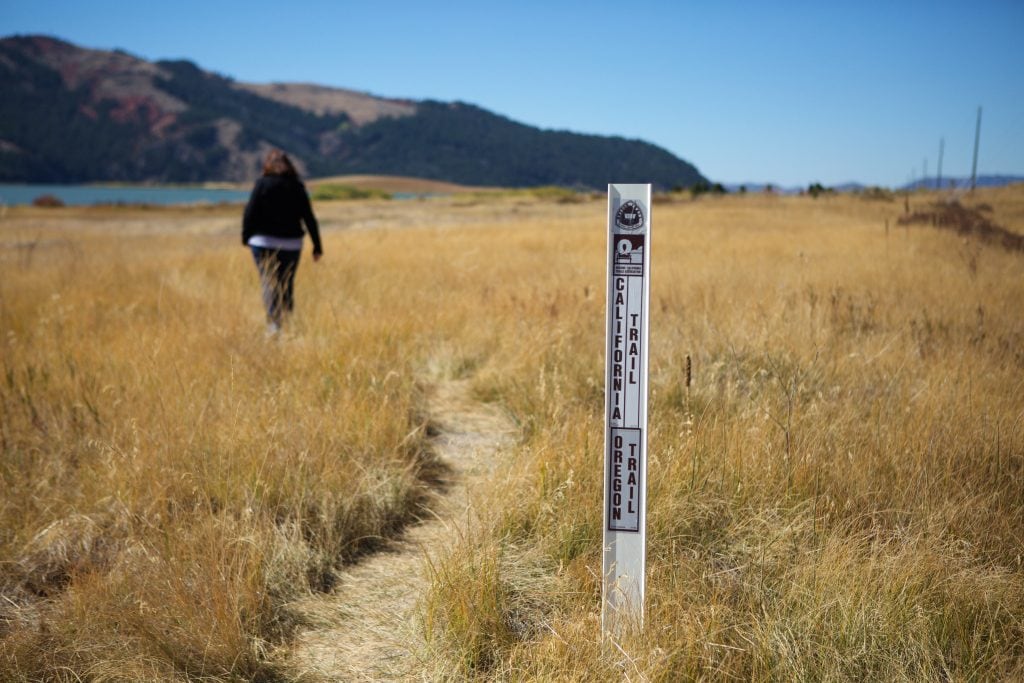
Craters of the Moon National Monument & Preserve: One of the most underrated national monuments! Ancient lava flows tucked away in southern Idaho make for an otherworldly experience as you hike around this park. Start at the visitor center, and then cruise around Loop Road to see several lava cones. Then get out and stretch your legs on a hike around the park. Looking for something more adventurous? There are several lava flow caves open for visitors to explore, ranging from easy to difficult.
13. Illinois
Lincoln Home National Historic Site: Before he was famous, Abe Lincoln started his law career in Springfield. He met and married his wife, began his political career, and the rest is history. Tour the house the Lincoln’s called home for nearly 20 years before moving to DC for the big promotion. The Historic Site covers 4 city blocks and includes several other historic homes from the neighborhood.
Mormon Pioneer National Historic Trail: The Mormon Pioneer trail spans across 5 states, but it begins in the town of Nauvoo, Illinois. Visit the Nauvoo National Historic Site and experience the town as it was in the 1840’s before the church leader and his brother were killed by a mob, forcing the Mormons to flee west.
14. Indiana
George Rogers Clark National Historical Park: On the banks of the Wabash River separating Indiana from Illinois is this small and underappreciated national monument to a man that opened the frontier for America. During the American Revolutionary War, Clark made it his mission to disrupt the British presence in the land west of the Appalachians. By taking the fort that once stood here, Americans had a foothold on the frontier. The victory ensured that the new border between Great Britain and the United States would be the Great Lakes rather than the Ohio River. If you’re an American living north of the Ohio River, you could have been a Canadian if it weren’t for George Rogers Clark!
Indiana Dunes National Park: One of the newest national parks, come explore the sand dunes along Lake Michigan! The park covers more than just the dunes, so you can hike beaches, marshland, prairies, and forests without leaving the park. Bring your bike or your horse if you prefer transportation other than walking. Stop by one of the two visitor centers to learn more about preserving the dunes.
15. Iowa
Effigy Mounds National Monument: Native Americans of this region were mound builders. Mounds in this park are shaped like bears and birds. Hiking trails lead you to each mound grouping, but note that they do look a little different from the ground than if viewed from the sky. Trails on the north end of the park include bluff views of the Mississippi River. Wave to your friends across the river in Wisconsin!
Herbert Hoover National Historic Site: The 31st President of the United States, Herbert Hoover, was the first president born west of the Mississippi River and grew up in West Branch, IA until he was orphaned at the age of 9. He returned much later in life, helping to establish the site and library, and is laid to rest on the grounds. The site includes prairie hiking trails, his birthplace cottage and other historic buildings, the Presidential Library and Museum, and his gravesite.
16. Kansas
Tallgrass Prairie National Preserve: One of the last undisturbed areas in the country of true tallgrass prairie. Stroll through this park and understand what the pioneers saw when they came out west to homestead: glorious fertile land as far as the eye can see. You may see a herd of bison but give them a wide berth when you’re hiking. Hint: The prairie grass is tallest in the fall with sufficient rainfall.
Nicodemus National Historic Site: After the Civil War, hundreds of newly freed blacks immigrated west to the frontier for a better life. Visit the oldest and only remaining African American settlement west of the Mississippi River in the tiny town of Nicodemus, KS. By far one of the least visited national monuments in the country, the Nicodemus Township Hall houses the NPS Visitor Center. Grab a walking tour map and see the 5 historic buildings left from the town’s founding.
17. Kentucky
Camp Nelson National Monument: Only 30min southwest of Lexington, learn about the first Civil War supply depot turned training camp for African American soldiers. These men and sometimes their families escaped slavery to the freedom of the North, and then turned around to fight for the freedom of their friends and family left behind on the plantations.
Cumberland Gap National Historical Park: The colonial Gateway to the West, Cumberland Gap was the passage through the lower Appalachian Mountains, opening the rest of the country for colonial expansion. Today it’s located at the convergence of 3 states (VA, TN, & KY) and is much less appreciated now that we have interstate highways. But seriously, can you imagine walking over the uncleared mountains? #thankful to be born in this century.
18. Louisiana
Atchafalaya National Heritage Area: This area is quintessential Louisiana: bayous, alligators, crawfish, and Cajun culture! Kudos if you know how to pronounce that without looking (uh-CHA-fuh-lie-uh). This area covers most of south-central Louisiana and a myriad of activities await. Tour a plantation, go on a bayou cruise, eat the amazing local cuisine, and enjoy the outdoors in this slow-paced and relaxed corner of the world.
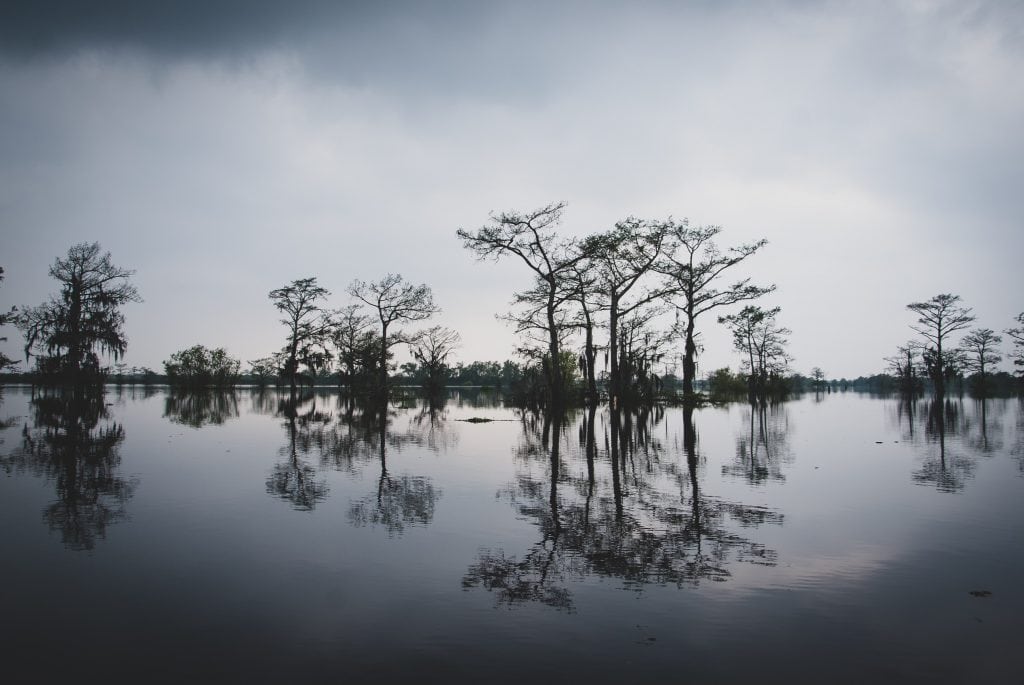
Poverty Point National Monument: This engineering masterpiece was a bustling trade center of prehistoric America. Today the underrated national monument is also a UNESCO World Heritage Site and preserves this important archaeological site of a civilization that’s now disappeared. Explore the site with a self-guided hike around the uniquely shaped earthworks engineered and constructed over 3000 years ago.
19. Maine
Roosevelt Campobello International Park: Visit one of President Franklin Roosevelt’s favorite summer getaways on Campobello Island. Tour the historic Roosevelt cottage and other cottages from the same time period, or explore bogs, beaches, and forests on the 8 miles of hiking trails on the property.
Saint Croix Island International Historic Site: In 1604 a French expedition got iced in at Saint Croix Island and half of them would not survive the winter before Native tribes approached in the spring to trade meat for bread. A mainland visitor center tells the tale and has a short walk to a view point of the Saint Croix Island in the middle of the river. Wave to your Canada neighbors who also have a park across the river!
20. Maryland
Antietam National Battlefield: The Civil War Battle of Antietam was the single bloodiest day in American history. Follow miles of trails to remember and reflect on a war that both tore us apart and brought us together. Climb the Observation Tower for an elevated view of the area, or visit the Pry House Field Hospital Museum for a glimpse into the horrors of being wounded in the 1800’s.
Fort Washington Park: Keeping watch at the mouth of the Potomac River, Fort Washington has protected our country’s capital since 1809. The fort has undergone several reincarnations as military technology evolved: first a masonry fort for the War of 1812, then a steel and concrete structure up through World War I. By World War II the fort was used more for training than protecting. Stroll the park’s miles of trails for amazing views of the Potomac River.
21. Massachusetts
Adams National Historical Park: Quincy was once the countryside, a peaceful escape from the hubbub of Boston. Today, you can take the Red Line train. See where both John and John Quincy were born, the 2nd and 6th Presidents of the United States, respectively. Wander the park at the Old House at Peace Field and learn about the 4 generations of Adams’ that lived and enjoyed the estate. Park at the visitor center and let the trolley shuttle you between sites for a stress free day of history.
Saugus Iron Works National Historic Site: Step back to the 1600’s and see how ironworking shaped the new colonies. See the forge, waterwheel, or hammer in action on a ranger-guided tour, or explore the museum and grounds at your own pace.
22. Michigan
River Raisin National Battlefield Park: Between Detroit and the Ohio state line, this park is right off of I-75 and practically on the Lake Erie shore. The War of 1812 saw this area change hands more than once. The Native Americans willingness to help the British fight the Americans was a clear indication that they were not willing to give up their lands to pioneers without a fight and foreshadowed the next century’s contentious relations with Native American tribes across the country.
Pictured Rocks National Lakeshore: Hiking, beaches, waterfalls, and amazing cliff views are all a part of Pictured Rocks on the shores of Lake Superior. This park is on the northern shore of the UP (Upper Peninsula, for all you non-Michiganders), and is a beautifully preserved natural landscape. Camp out for a weekend, or just spend a peaceful day walking a secluded beach with no one else around.
23. Minnesota
Pipestone National Monument: This cultural site is sacred to many Native tribes because the pipestone quarried here for centuries is fashioned into prayer pipes. Use of the prayer pipes is believed to bring you closer to the Great Spirit. Learn about quarrying and pipemaking and experience a centuries old culture still alive today at this underappreciated national monument.
Grand Portage National Monument: A bustling fur trading site on the shores of Lake Superior, experience the Grand Portage which connected Lake Superior to Fort Charlotte 8.5 miles inland. The partnership formed between the native Ojibwe tribe and the European fur traders was peaceful, and the Ojibwe people still occupy the land today.
24. Mississippi
Natchez Trace National Scenic Trail & Parkway: Historic “Old Southwest” trail which began in Nashville, TN and connected to Natchez, MS on the Mississippi River. Drive the parkway for scenic views and stop as desired for short hikes. Or hike a section of the old trail to get the true settler experience. Four of the five hiking sections are within Mississippi. Pick a section to explore, or make a goal to try them all!
Vicksburg National Military Park: The key to the Confederacy’s demise: the Battle of Vicksburg was crucial to the Union victory of the Civil War. About 45min west of present-day Jackson, Vicksburg is located on the all-important transportation route: the Mississippi River. The Union Army laid siege to Vicksburg for 47 days before the Confederate forces surrendered on July 4, 1863.
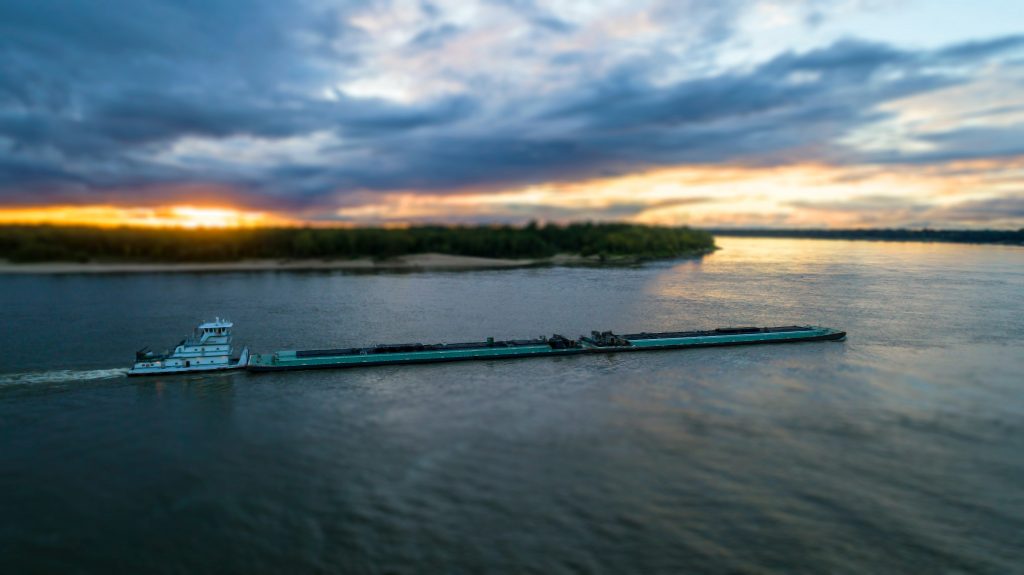
25. Missouri
Pony Express National Historic Trail: Starting in Missouri and ending in California, the Pony Express trail was once the quickest route for cross country communication. Young messengers would gallop their horses across miles of open land to their next stop, delivering messages 1800 miles away in an unprecedented 10 days. See the original Pony Express Stables in St Joseph, and learn more about the long distance communication prior to the invention of the telegraph. It’ll make you even more thankful for the internet!
George Washington Carver National Monument: Walk in the footsteps of young Carver while growing up in rural Missouri. Born shortly before the end of the Civil War, his parents were slaves and he was orphaned at a young age. His passion for plants began early in life, and he evolved into one of the top scientists and founding faculty of the Tuskegee Institute in Alabama. In Missouri, see his birthplace and boyhood home and enjoy the natural landscape that inspired a life-long love of plants.
26. Montana
Little Bighorn Battlefield National Monument: Custer’s famous Last Stand happened here when thousands of Cheyenne and Lakota warriors made their last attack against the invasion of the Europeans. Both the US Army cavalrymen who were killed and the Native Americans who were fighting to defend their way of life are remembered here. This underrated monument is about an hour east of Billings on Crow Reservation land.
Grant-Kohrs Ranch National Historic Site: Cowboys and cattle ranchers once ruled the west! See this perfectly preserved ranch to learn about the cowboy way of life and what it meant to the American West. Right off of I-90, an hour from Missoula or 2hr from Bozeman, you’ll find this secluded and still functioning ranch. Tour the historic barns, bunkhouses, and other buildings, and take some time to hike the ranch. You won’t regret the views and peace and quiet.
27. Nebraska
Niobrara National Scenic River: Tubing, canoeing, and whitewater kayaking are all fair game on this river. Enjoy peaceful lazy river days or adventurous rafting down rapids. Or get off the river and enjoy some camping and hiking. Up for a little history? Stop by Fort Niobrara
Scotts Bluff National Monument: Rising over the North Platte River, Scotts Bluff was an important landmark for the pioneers of the Oregon, California, and Mormon Pioneer Trails, who didn’t have GPS to tell them they were going the right direction. Drive or hike to the top for sweet views of the area. Walk on a portion of the real Oregon Trail, and ride your bike on the Prairie View Trail.
28. Nevada
California National Historic Trail: Some pioneers on the Oregon Trail decided they wanted to go to California instead. The first trailblazers made it in 1841, followed by a few groups here and there, including the infamously doomed Donner-Reed party. But with the discovery of gold in California in 1848, the California trail traffic picked up significantly. Not just one route but several as emigrants made their way across the deserts and mountains, there are many sites to see along the trail in Nevada!
Tule Springs Fossil Beds National Monument: Just north of Las Vegas, take some time away from Sin City to appreciate this underrated national monument. Quarry workers uncovered mammoth bones in 1933 and numerous scientific digs since have unearthed thousands of fossils and prehistoric animal remains, including camels, mammoths, sloths, and bison. You can still see the remains of the Big Dig from 1962. However, most of the fossils were moved to the San Bernardino County Museum in California in 2004, before the site could be named a national monument.
29. New Hampshire
Saint-Gaudens National Historical Park: Augustus Saint-Gaudens was one of America’s best sculptors in the Gilded Age. Much of his work revolved around memorials for the Civil War. Take a guided tour to learn more about his sculptures, his life, and his home. Hike the park for a relaxing end to the day.
Appalachian National Scenic Trail: Known as simply “the AT” to hiking enthusiasts, the Appalachian Trail runs from Maine to Georgia and traverses some truly breathtaking scenery. The portion of the trail in New Hampshire is primarily in White Mountain National Forest. Many of us don’t have the ability to take off several months to complete the full trail in one continuous hike. But that’s ok! Hiking it in sections over several years still counts as completing the AT. You’ll still get bragging rights!
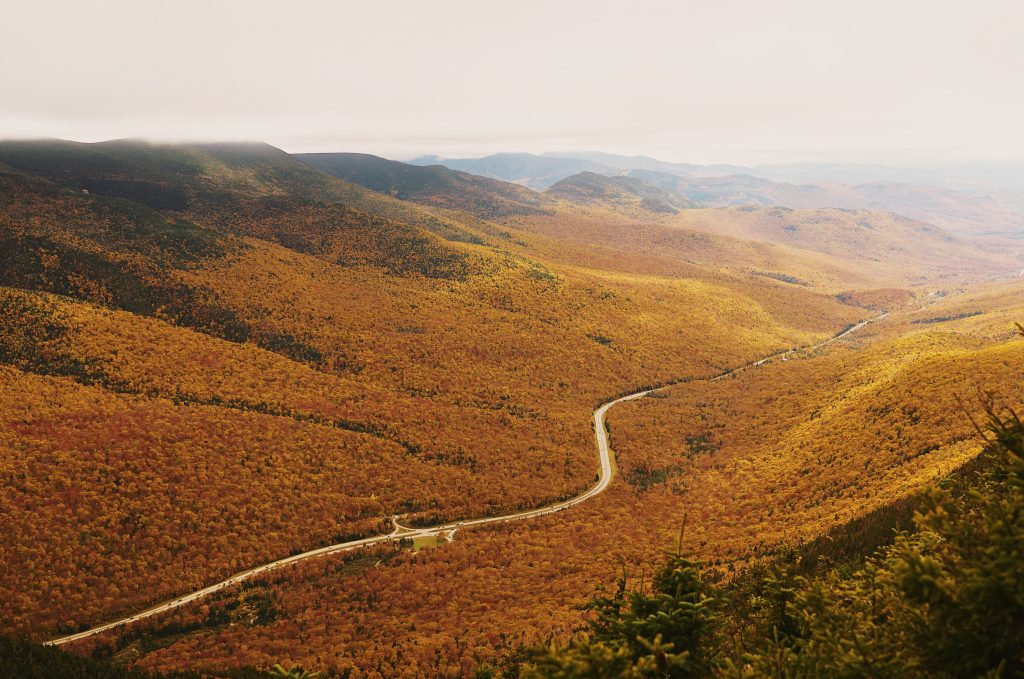
30. New Jersey
Morristown National Historic Park: Before rendezvousing with the French for the campaign to end the Revolutionary War, George Washington and the Continental Army had to camp for a record-breaking cold winter in Morristown. Visit for a glimpse back to soldier life in the 1700’s.
Paterson Great Falls National Historic Park: The Great Falls are a wonder to behold; enjoy the waterfall experience from the pedestrian walkway over the river! Stop in the visitor center to learn about Paterson, the first planned industrial city in the United States. Those Great Falls aren’t just beautiful. They also powered the hydroelectric plant that helped make this area a bastion of industry at the turn of the century.
31. New Mexico
Aztec Ruins National Monument: Noted as an ancient migration route, this area was once inhabited by the Pueblo over 900 years ago. Begin at the visitor center, housed in archaeologist Earl Morris’ home, to see a quick video and browse the museum. Next, take a self-guided tour of the ruins, ending at the reconstructed semi-subterranean Great Kiva.
Capulin Volcano National Monument: This dormant volcano in northeast New Mexico illustrates the varied and active past that formed this corner of the western United States. Drive to the top, hike around the rim, and see four different states on a clear day! Also from this vantage point, it’s easiest to see the four lava flows discussed at the visitor center museum.
32. New York
Women’s Rights National Historical Park: Seneca Falls is in the beautiful Finger Lakes region of upstate New York. Visit the museum and learn about the very first women’s rights convention held in 1848, more than 70 years before women would secure the right to vote. Don’t miss Elizabeth Cady Stanton’s home and the Waterfall at Declaration Park which memorializes the words of the Declaration of Sentiments.
Hudson River Valley National Heritage Corridor: The Hudson River Valley between New York City and Albany is positively stuffed full of historical homes and sites and beautiful natural landscapes. For decades, industrialists and politicians with names like Roosevelt, Rockefeller, and Vanderbilt built magnificent mansion getaways tucked into the forests. Speaking of the forests, the fall is the absolute best time to hike this area and watch as the trees burst into color!
33. North Carolina
Wright Brothers National Memorial: While this area of the Outer Banks isn’t necessarily the best for escaping people, but it is an underappreciated national monument. See where the Wright Brothers first took flight and introduced aviation to the world in 1903. Visit the monument atop Kill Devil Hill and the exhibits in the NPS visitor center to round out your trip!
Cape Lookout National Seashore: Spend a day on undeveloped and undisturbed barrier islands, also in North Carolina’s famous Outer Banks. Stand in awe and watch wild horses gallop across their beach home! Check out the website to decide what you want to do the most before heading out for a fun day on a secluded beach.
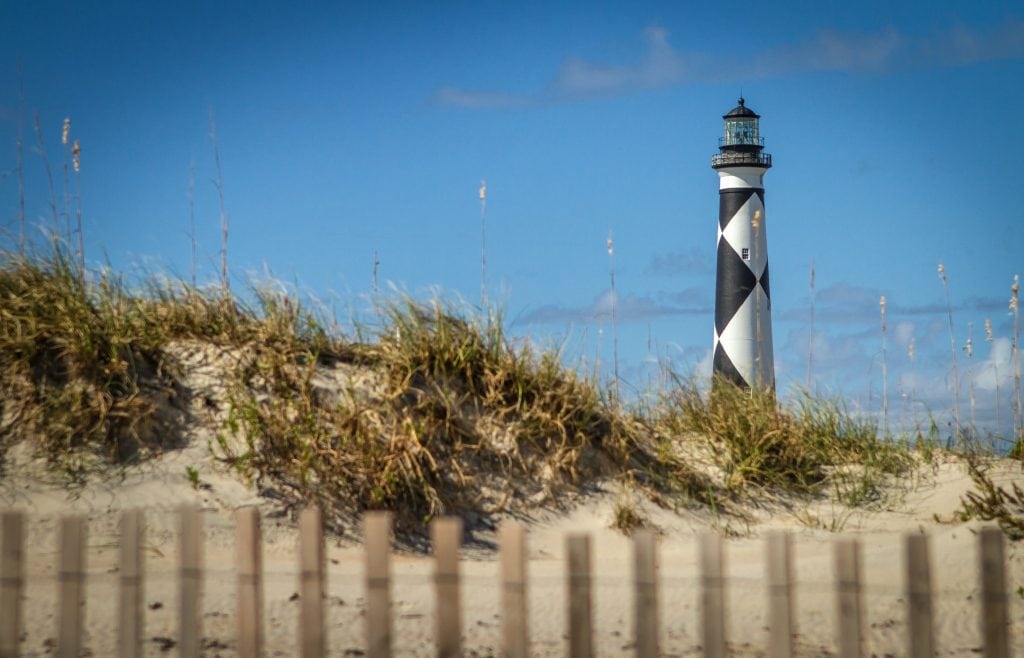
34. North Dakota
Fort Union Trading Post National Historic Site: On the state line with Montana, find the old Fort Union Trading Post. This fort was one of the Plains’ busiest fur trading posts of the mid 1800’s, seeing nearly 25,000 buffalo robes per year from the Native American tribes in exchange for European goods such as blankets, beads, and guns.
Knife River Indian Villages National Historic Site: About an hour northwest of Bismarck, explore an important Native American trading center along the banks of the Missouri River. Take a hike to see gorgeous views of the Missouri and Knife Rivers, and see the ancient Native American camps. Fishing and birding are popular here, and the visitor center can give you all the details of what this area looked like hundreds of years ago before the Europeans arrived.
35. Ohio
Perry’s Victory & International Peace Memorial: A single Doric column towers 352ft over Lake Erie to commemorate the Battle of Lake Erie during the War of 1812 and the peace that Americans and Canadians have enjoyed ever since. Take a ferry out to Put-in-Bay on South Bass Island and enjoy the lake island atmosphere.
James A. Garfield National Historic Site: James Garfield was the 20th President of the United States and was assassinated after only 6 months in office. He was actually shot in July but didn’t succumb to his injuries for another 2 months! Take a guided tour of his home just outside of Cleveland and learn more about his family.
36. Oklahoma
Chickasaw National Recreation Area: Originally owned by the Chickasaw and Choctaw tribes, this area has been protected since 1902 and has undergone a few name changes before settling on Chickasaw National Recreation Area. Boating, fishing, swimming, and paddling are all available on the lakes, or take a hike and see mineral springs and waterfalls along the many nature trails.
Oklahoma City National Memorial: A place of remembrance for the 168 victims of the April 1995 bombing of the Alfred P. Murrah Federal Building in downtown Oklahoma City. Learn what led to the bombing and hear from survivors.
37. Oregon
Lewis & Clark National Historical Park – Fort Clatsop: When Lewis and Clark finally made it to the Pacific, they made winter camp at Fort Clatsop. The visitor center exhibits fill you in on the details, and then you can wander the replica fort and trails of the area. In the summer, see living history programs with rangers in full 1800’s costume. Take a paddle tour of the Lewis and Clark River and get a unique perspective of this historical area.
Oregon Caves National Monument & Preserve: See the effect of centuries of acidic water on marble rock in the Oregon Caves. Take a guided tour to see the most popular chambers, or opt for the Off-Trail Caving Tour and explore the deepest and tightest places in the cave system!
38. Pennsylvania
Valley Forge National Historical Park: George Washington and the Continental Army bedded down for their worst winter near the town of Valley Forge, PA. Stroll through the area on the self-guided tour and try to imagine living here through the winter with nothing more than a drafty, quickly constructed log cabin and an old jacket to keep you warm.
Johnstown Flood National Memorial: This little known tragedy highlights the hubris and detachment of businessmen and the devastating consequences it had on innocent lives. When the South Fork Dam failed for the third time in May 1889, 3.6 billion gallons of water rushed through the valley and swept away town after town, killing 2200 people. Take a guided van tour to learn the whole story, or get out and hike the path the water took with a ranger guide.
39. Rhode Island
Roger Williams National Memorial: An underappreciated historical figure, Roger Williams founded the colony of Rhode Island on religious freedom principles after being kicked out of Massachusetts for his beliefs. The colony thrived as settlers of different faiths flocked to the area to escape persecution elsewhere. Learn more about Roger Williams at the visitor center exhibit and on plaques across the 4.5 acre park.
Blackstone River Valley National Historical Park: Pawtucket, Rhode Island is home of the Slater Mill Historic Site, America’s first water-powered cotton spinning mill, and industry has never been the same since. The Blackstone River Valley extends into Massachusetts and encompasses many mill towns that created the blueprint for mass industry that kicked off the Industrial Revolution. Spend time wandering these quaint small towns, bike along the river, or get out on the water for a day of peaceful kayaking.
40. South Carolina
Kings Mountain National Military Park: The Battle of Kings Mountain was an important victory for the Americans in the Revolutionary War. Learn more about the Revolutionary War’s Southern campaign: see the visitor center’s film and museum and hike the 1.5 mile self-guided trail around the battlefield. Located on the state line, this is a good day trip for residents in South or North Carolina.
Congaree National Park: Most of South Carolina’s underrated national monuments are battlefields, so I’m including this park for some variety. Enjoy a day away in an old growth bottomland hardwood forest. Spotty cell service and a lack of other people make you forget you’re only 30 minutes outside of downtown Columbia, South Carolina’s capital. Hike out to the park’s namesake, the Congaree River, or spend the day on a friendlier waterway and paddle Cedar Creek. Check out the ultimate guide to Congaree National Park for everything to know before you go!

41. South Dakota
Badlands National Park: Badlands is the best option of all the NPS sites in South Dakota for avoiding crowds. (Mount Rushmore National Memorial is neither underappreciated nor devoid of people.) Spot a herd of bison or visit the Roberts Prairie Dog Town. Take a hike to marvel at the colors of the stone cliffs. Camp in isolation and enjoy the night sky with minimal light pollution. Social distancing at its most peaceful!
Minuteman Missile National Historic Site: At the height of the Cold War, the US implemented a system of thousands of nuclear missiles, ready to be launched at a moment’s notice. In the unassuming plains of South Dakota, take a tour of the once classified launch facility and see an actual missile silo! (with an unarmed missile; let’s not be crazy.) Literally a 5 minute drive from Badlands NP and spread out over three sites along a 15 mile stretch of I-90, this is an interesting glimpse into an era shrouded in secrecy.
42. Tennessee
Manhattan Project National Historical Park – Oak Ridge, TN: This underrated national park includes sites in New Mexico and Washington state as well. But the focus in Tennessee is the military town and industrial area built secretly just outside of Oak Ridge. Over 75,000 people lived and worked at the site on the military’s top secret research to enrich uranium and produce plutonium for development of the world’s first nuclear bombs.
Big South Fork National River & Recreation Area: Enjoy the South Fork of the Cumberland River and its beautiful cliffs, hiking trails, and surrounding forests. Portions of the river are great for canoeing or kayaking, but the southernmost portion is whitewater rafting territory! Helpful Tip: the Eastern/Central time zone split divides the park, but all park facilities use the Eastern time zone.
43. Texas
Waco Mammoth National Monument: America’s first and only nursey herd of Ice Age mammoths was discovered in Waco in 1978. A couple of men just looking for some arrowheads near the Bosque River stumbled upon a giant animal bone sticking out the ground. The local university identified it as a mammoth femur, and subsequent archaeological digs found over 20 mammoths along the river! The majority of the bones have been left in place, and the site is protected by a Dig Shelter to preserve the bones for future visitors.
Palo Alto Battlefield National Historical Park: Step back in time to May 1846 and discover the origins of the US-Mexican War. Check out the visitor center museum to learn how this two-year conflict redrew borders in North America and its lasting impact on the area. Next, get out and hike the battlefield and stand where the Mexican and US lines stood for the first showdown of the war.
44. Utah
Dinosaur National Monument: See thousands of dinosaur bones still trapped in the earth along the Dinosaur Quarry Trail and in the Quarry Exhibit Hall. This park extends into Colorado and has ample hiking, camping, and whitewater rafting opportunities in addition to the dinosaurs!
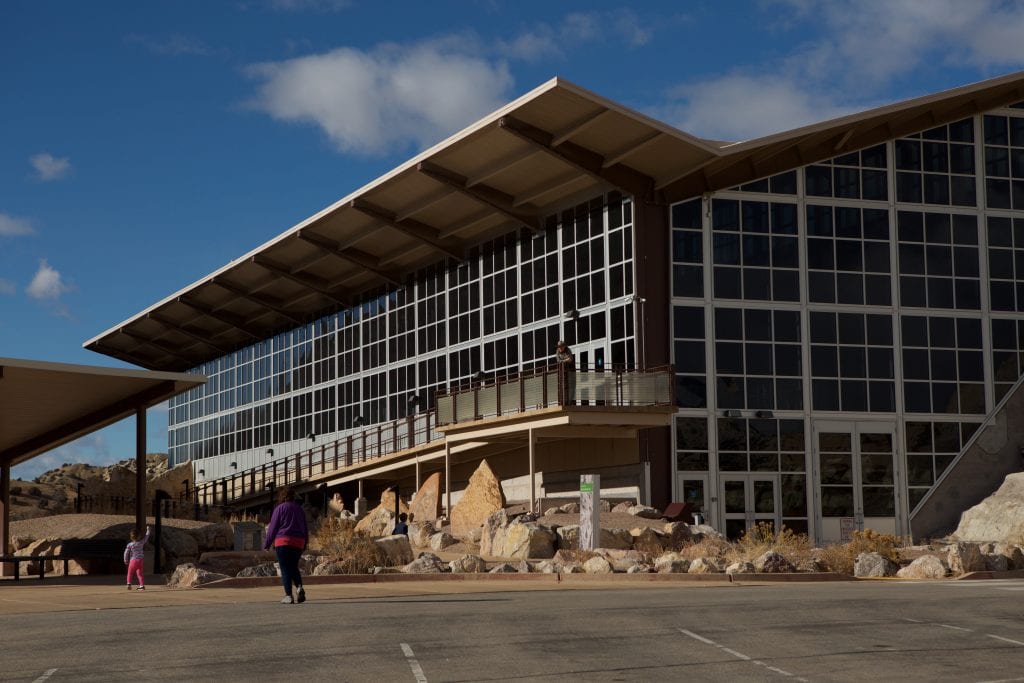
Golden Spike National Historical Park: Do you like trains? This park preserves a stretch of the original Transcontinental Railroad and the Golden Spike that commemorated the completion of the massive feat. This is a very remote location, so don’t count on cell service. Save your maps offline or bring a paper copy.
45. Vermont
Marsh-Billings-Rockefeller National Historical Park: Named after the women how took the time and interest to restore and preserve the natural landscape around them, this park is tucked away in the small town of Woodstock. Tour the Victorian mansion or take advantage of the 20 miles of hiking trails with some beautiful forest scenery.
North Country National Historic Trail: This is the NPS’s newest trail system and was only approved for Vermont in 2019. Most of the proposed trail is still under development, but it does link up to trails already in place. Check out the Middlebury trails for a taste of what you’ll see on the North Country National Historic Trail across the country.
46. Virginia
Appomattox Court House National Historical Park: A little less than 2hr west of Richmond or 30min east of Lynchburg, the end of the most destructive conflict in US history happened here at Appomattox Court House, VA on April 9, 1865. Learn about the campaign leading up to the surrender, and take advantage of the many hikes to explore the area on foot.
Prince William Forest Park: Originally opened as a children’s relief camp during the Great Depression of the 1930’s. An hour north of Richmond or only 30min south of Washington, DC, the park is still a wonderful forested getaway. Camping and hiking are the main activities to enjoy here if you just want to get out of the house for a weekend.
47. Washington
Fort Vancouver National Historic Site: On the north bank of the Columbia River, this historic area has been a fur trading post, a Catholic mission, an army post, and an airfield for World War I. Oregon Trail emigrants also passed through here on their journey to stock up on supplies. Get out of the house and dose of history for the day.
Lake Roosevelt National Recreation Area: In 1931 the Grand Coulee Dam was built across the Columbia River and the lake formed was named Roosevelt for the President. If you love lakes, this area has something for you: swimming, kayaking, camping, and hiking. There are even a few historical sites if you’re interested.
48. West Virginia
Harper’s Ferry National Historical Park: Harper’s Ferry resides at the intersection of three states (WV, MD, & VA) and two rivers (Shenandoah and Potomac). This historical town is chock full of history museums and boasts gorgeous river views from the bluffs above. The Appalachian Trail also passes right through town, and several Civil War battlefields are nearby. Don’t miss the John Brown Museum and Fort!
New River Gorge National River: *upgraded to national park status in 2020!* Depending which section of the river you visit, pretty much every outdoor activity associated with a river can be found here: kayaking, whitewater rafting, fishing, and hiking for stunning views. There are 4 different visitor centers and hiking trails along the entire length of the park. Don’t miss the engineering marvel that is the New River Gorge Bridge. You won’t be disappointed by the views!
49. Wisconsin
Apostle Islands National Lakeshore: Consisting of 12 islands off the coast of Wisconsin in Lake Superior, Apostle Islands has tons of water activities and a different point of interest on every island. Take your own boat, book ahead with third party outfitters, or take a cruise around them all. You’ll have a blast no matter which island you pick.
BONUS: Head to Meyers Beach in the winter to experience the Mainland Ice Caves along the shore of Lake Superior!
Saint Croix National Scenic Riverway: This park includes portions of the Namekagon and Saint Croix Rivers, the latter of which forms the state line between Wisconsin and Minnesota. Enjoy a day canoeing or kayaking on the water, or make a weekend of it and camp near the river. With over 200 miles of pristine river, find a cozy spot and relax!
50. Wyoming
Devil’s Tower National Monument: Considered sacred by some Native American tribes, Devil’s Tower is a geologic wonder rising out of the prairie of Wyoming. Take the paved 1.3 mile long loop Tower Trail to circle the monument, or explore one of the longer hikes on the property. This area is also fantastic for night sky viewing, so camp out and enjoy the stars!
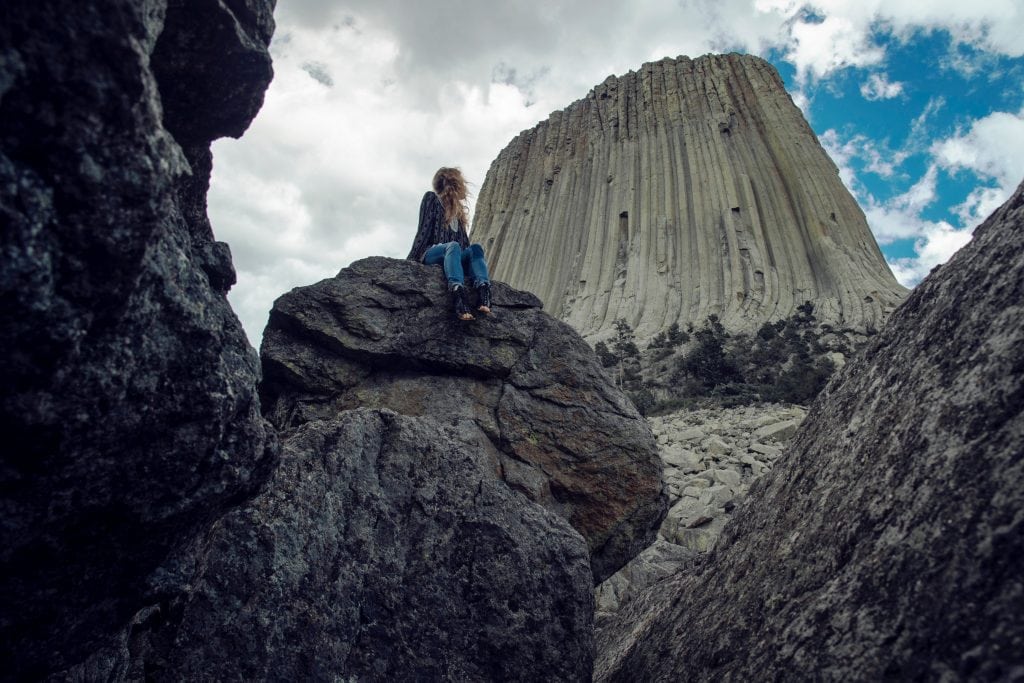
Fort Laramie National Historic Site: Like so many others this fort started out as a fur trading post, but unlike the others it became one of the most important army outposts of the Northern Plains during the Indian Wars of the late 1800’s. Emigrant trails all came through here for supplies on their journey as well as the all-important Pony Express and the transcontinental telegraph. Step back in time for a day in the Old West!
What are your favorite underappreciated National Parks or Monuments?
Happy Travels!

About the Author: Rachel Means
With six-figure student loan debt and only 10 PTO days per year, Rachel started traveling the world. A decade later, she’s paid off her loans, changed careers, and been to 36 US states and 14 countries. She’s an expert at planning and budgeting for travel and loves to help others do it, too! Read her full story here.
Share it!
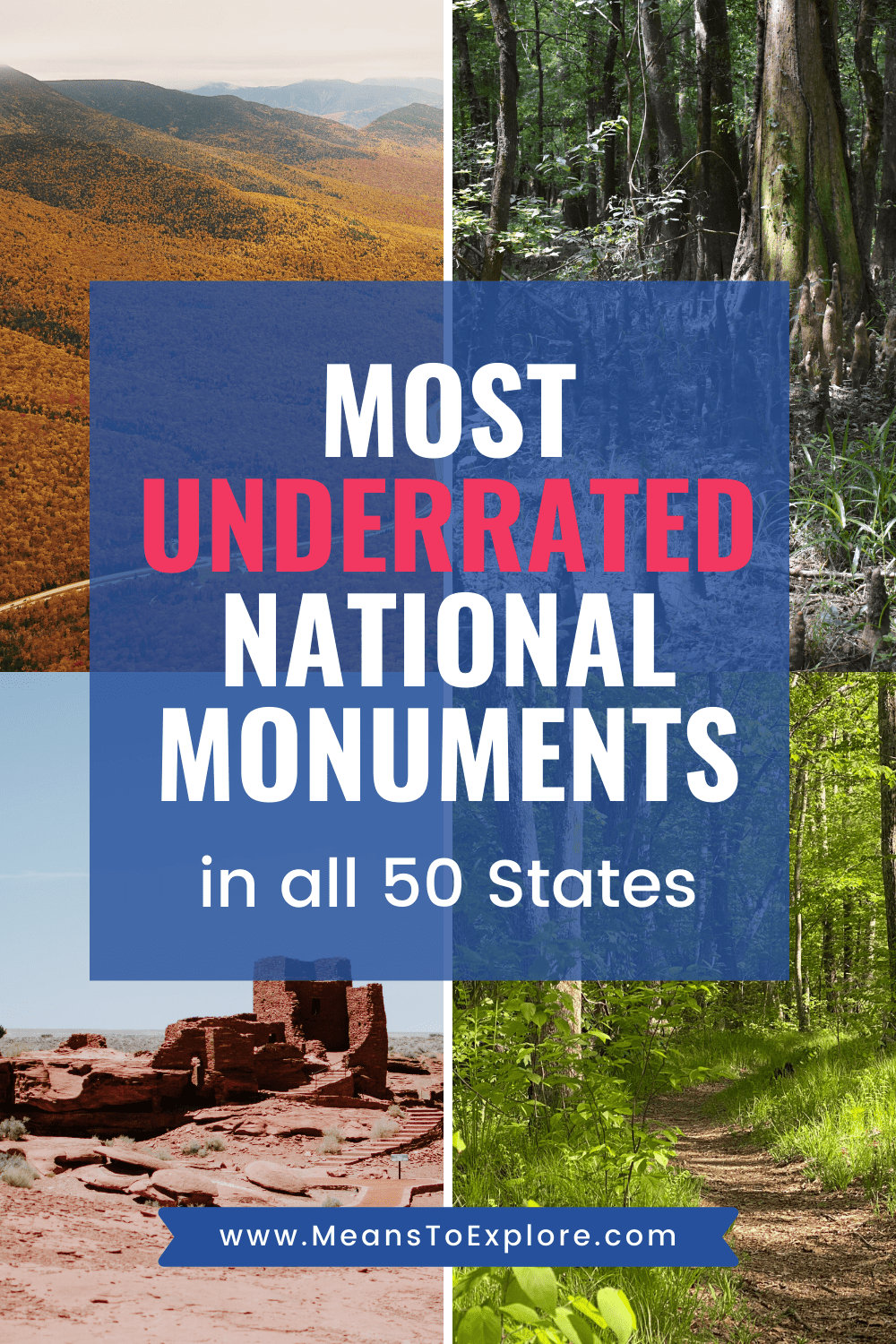


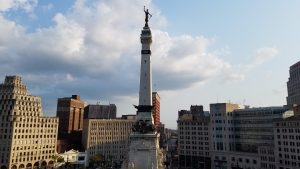
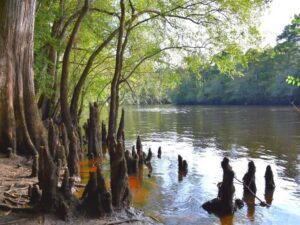
WOW! What a comprehensive list! Thank you so much for sharing this, I have added this to my USA travel guide pins!
Glad you found it useful! Hidden gems are the best!
My US bucket list just got bigger when the borders reopen. This is an amazing list. Some of these I have never heard of so I’m excited to see them. Wupatki in Arizona looks really interesting, and I’ve always wanted to do the Appalacian Trail since reading Bill Bryson’s book on it.
Glad to hear it! I love spotlighting lesser known hidden gems. Sometimes you just don’t want the crowds! The portions of the Appalachian Trail that I have hiked have all been awesome! You should definitely try it!
OMG this is amazing! And so comprehensive! Thank you!!
I’m glad you like it! Hope it’s useful!
What a comprehensive guide – wow!! As a Canadian, I have visited very little of the States but love the abundance of parks to explore! I think we need to focus more on North America travel when we can and get to some of these places! I’d love to get to Hawaii!!
The US has a lot to choose from! I agree that North America in general is also a great place to explore. Such a wide variety of landscapes!
It’s always fun to see what parks people select for these kinds of posts. You have chosen some of my favorites–Pictured Rocks, Devil’s Tower, Seneca Falls Women’s Rights Park. Badlands, Pipestone and some others. Technically, Campobello is in Canada not Maine, but it’s a wonderful park I’ve biked across the border to visit.
That’s the wonderful thing about the US park system: there’s so many to choose from!